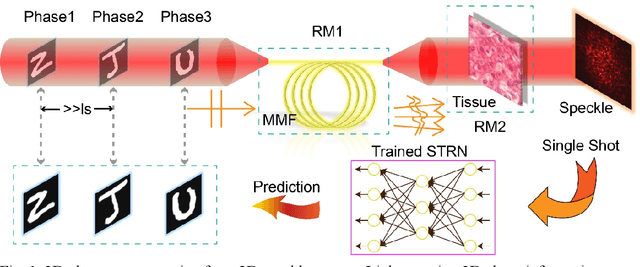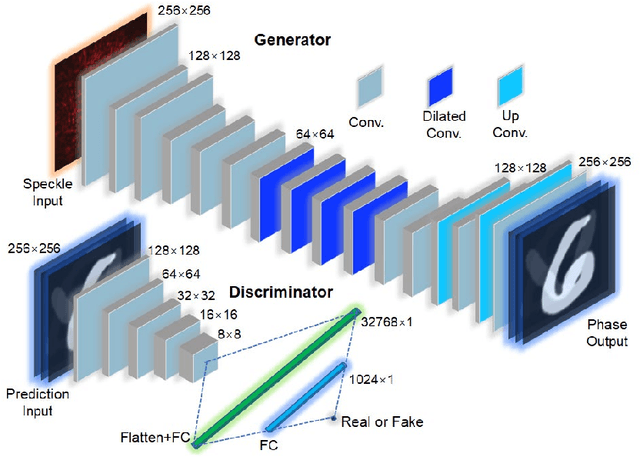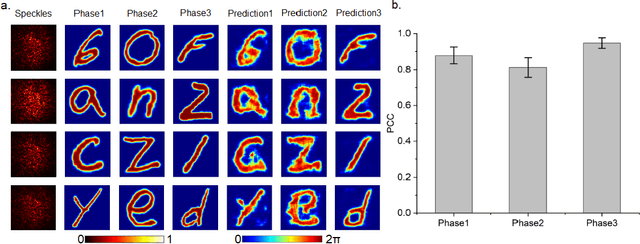Jixiong Pu
Reconstructing Images of Two Adjacent Objects through Scattering Medium Using Generative Adversarial Network
Jul 24, 2021



Abstract:Reconstruction of image by using convolutional neural networks (CNNs) has been vigorously studied in the last decade. Until now, there have being developed several techniques for imaging of a single object through scattering medium by using neural networks, however how to reconstruct images of more than one object simultaneously seems hard to realize. In this paper, we demonstrate an approach by using generative adversarial network (GAN) to reconstruct images of two adjacent objects through scattering media. We construct an imaging system for imaging of two adjacent objects behind the scattering media. In general, as the light field of two adjacent object images pass through the scattering slab, a speckle pattern is obtained. The designed adversarial network, which is called as YGAN, is employed to reconstruct the images simultaneously. It is shown that based on the trained YGAN, we can reconstruct images of two adjacent objects from one speckle pattern with high fidelity. In addition, we study the influence of the object image types, and the distance between the two adjacent objects on the fidelity of the reconstructed images. Moreover even if another scattering medium is inserted between the two objects, we can also reconstruct the images of two objects from a speckle with high quality. The technique presented in this work can be used for applications in areas of medical image analysis, such as medical image classification, segmentation, and studies of multi-object scattering imaging etc.
Recognizing three-dimensional phase images with deep learning
Jul 22, 2021


Abstract:Optical phase contains key information for biomedical and astronomical imaging. However, it is often obscured by layers of heterogeneous and scattering media, which render optical phase imaging at different depths an utmost challenge. Limited by the memory effect, current methods for phase imaging in strong scattering media are inapplicable to retrieving phases at different depths. To address this challenge, we developed a speckle three-dimensional reconstruction network (STRN) to recognize phase objects behind scattering media, which circumvents the limitations of memory effect. From the single-shot, reference-free and scanning-free speckle pattern input, STRN distinguishes depth-resolving quantitative phase information with high fidelity. Our results promise broad applications in biomedical tomography and endoscopy.
 Add to Chrome
Add to Chrome Add to Firefox
Add to Firefox Add to Edge
Add to Edge